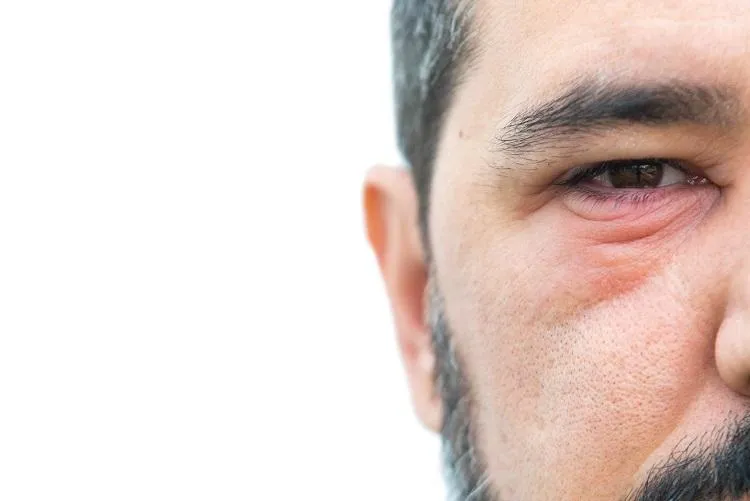Ways to Get Rid of a Cyst on the Eyelid
September 24, 2022
To help keep your eyes moist, small glands on your eyelid create an oily substance. If one of those glands becomes blocked, you can have a chalazion (cyst), which is a swollen, pain-free gland. A chalazion can be treated at home.
What is a chalazion (cyst)?
A chalazion is a little red lump on the inside of your upper eyelid. Eyelid cysts and meibomian cysts are two names for the same condition. When an oil gland (known as a meibomian) becomes clogged, chalazion or cysts develops.
The chalazion may hurt at first, but it normally stops hurting after a while. Most of the time, a chalazion appears on the upper eyelids, although it can also appear on the lower eyelids.
Chalazion and styes
Although a chalazion is not the same as a stye, it can develop from one. Bacterial infections that cause the gland to get enlarged are known as styes. Styes may cause discomfort. A chalazion is a benign growth on the back of the eyelid that is not unpleasant.
What causes cysts on the eyelids?
Chalazia can occur when a little oil gland on the eyelid is blocked. These glands aid in the moisturization of the eyes. When a gland becomes clogged, it begins to retain oil and get enlarged. The fluid will eventually drain, leaving a firm bump on your upper eyelid.
Chalazia can be caused by a variety of other factors, including:
- Rosacea - a skin condition that causes redness and acne
- Blepharitis (inflammation of the eyelids) - redness, swelling and irritation
- Seborrheic dermatitis - a type of dermatitis that affects the skin and causes red, dry, flaky and itchy skin
- Tuberculosis
- Viral infection
What are the symptoms of a chalazion?
You will experience the following symptoms if you have a chalazion:
- It's a small, painless lump on the upper lid of your eye.
- Mild irritability with watering eyes
- Bigger chalazion pushing on the eyeball causing blurred vision
How is a chalazion diagnosed?
When you have a chalazion, you should usually see an eye doctor. An ophthalmologist near you may be consulted. These medical professionals can inspect the chalazion and recommend treatment.
Expect the following when you visit an eye specialist:
- Give a detailed medical history. This information can aid your provider in identifying underlying concerns that may be causing the chalazion to occur.
- External eye exam: Your eye, eyelids, eyelashes, and skin texture will all be examined by your provider.
- Eye doctors look at the base of your eyelashes using powerful light and magnification. They also look into the apertures of the oil glands.
How do you treat a chalazion?
A chalazion can be treated at home in the majority of cases. Chalazia usually clear up in a month or less.
To begin with, never try to pop or push a cyst. Instead, try the following remedies at home:
- Warm compresses: Soak a clean washcloth in warm water and apply it to the affected area. For 15 minutes, apply it to the afflicted eye. To assist the blocked oil gland in opening up, repeat at least three times a day.
- Massage the eyelid a few times a day very gently. Use light to medium pressure to massage for a few minutes each day. The blocked oil gland can be opened with a gentle massage.
- When you have a chalazion, you should avoid using eye makeup. Maintain cleanliness after the chalazion drains. Avoid touching your eyes and follow proper eye health practices.
- You should see an eye specialist near you if the chalazion does not go away. A tiny incision may be necessary to drain the fluid from the chalazion. To minimise swelling and inflammation, you may need a steroid injection.
Can a chalazion be prevented?
By practicing good cleanliness, you may avoid developing a chalazion. The following are some of the most important aspects of personal hygiene:
Handwashing: Make sure that you wash your hands thoroughly and frequently. Make sure that your hands are clean before touching your eyes.
Before removing your contact lenses, make sure that you wash your hands. Using a disinfectant and lens-cleaning solution, ensure that your contacts are well cleaned. Daily and limited-time contacts should be discarded regularly.
Face-washing: Before going to bed, wash your face to remove any dirt or makeup. If you're prone to blepharitis, your doctor may advise you to clean your eyelids with a specific scrub or baby shampoo.
Makeup hygiene: Get rid of any makeup that is old or expired. Replace eyeshadow and mascara every two to three months. Also, never borrow or use someone else's cosmetics.
Conclusion
It is critical to maintain the health of your eyes. Styes and chalazia or cysts do occur from time to time. While these bothersome eye issues might be unpleasant, they can be easily treated at home. Consult your doctor about how to avoid these aggravating eye conditions.
Request an appointment at Apollo Spectra Hospital. Call 18605002244
A chalazion should go away in a week with proper care at home. It can take four to six weeks for a chalazion to heal if it is not treated.
You may get another chalazion if you already have one. To help prevent chalazia, maintain good hygiene at all times.
Consult an eye professional if your chalazion persists despite your best efforts. They'll be able to inspect the eyes and suggest treatments. If you have chalazia that won't go away, you should consult your doctor (eyelid bumps that come back).
NOTICE BOARD
CONTACT US
CONTACT US
 Book Appointment
Book Appointment


.svg)
.svg)
.svg)
.svg)








